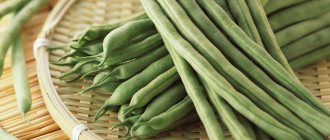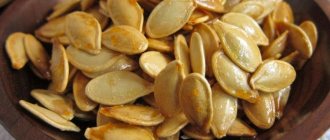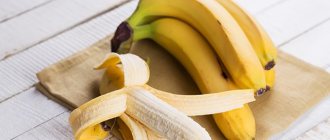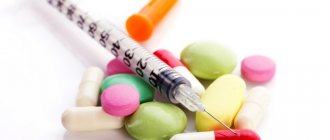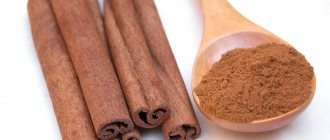Diabetes mellitus is a chronic irreversible metabolic disorder caused by a deficiency of the hormone insulin and an increase in blood glucose. Accompanied by uncontrollable thirst, polyuria, weakness, and poor wound healing. Symptoms are varied and depend on the type of diabetes. If there is insufficient insulin synthesis, they speak of the development of type 1 diabetes; if tissues are not responsive to the hormone, they speak of type 2 diabetes.
Regardless of the type of diabetes, patients are advised to follow a diet and monitor the glycemic index (GI) of foods. Patients with insulin-dependent type 2 diabetes require hormone replacement therapy. Lack of control over nutrition and GI levels develops a life-threatening complication in the form of hyper- or hypoglycemic coma.
Why is drinking juices dangerous if you have diabetes?
The benefits of fruit juices are too overrated today. Freshly squeezed homemade drinks, packaged industrial, pasteurized fruit compotes are dangerous not only for diabetics. The reason lies in the concentration of various sugars, including glucose. The level of glucose in a freshly squeezed product is significant, even if the ingredient is not specifically added.
By drinking half a liter of fresh juice, the body receives up to 45-50 g of sugars, which reaches the upper limit of the daily norm. In addition to sugars, fresh juices contain a vitamin and mineral complex. On the one hand, this means increased immunity and benefits, on the other hand, there is an increased load on the liver and organs of the hepatobiliary system.
Store-bought drinks undergo a pasteurization process. The value of such a product is minimal, and the sugar content is unacceptable for people with diabetes.
Fresh, canned or store-bought
The most undesirable type of tomato juice for any type of diabetes is store-bought. In a purchased product, the concentrations of sugar, preservatives and other chemical impurities are often high, while the content of useful substances, on the contrary, is very low. The use of such a product can cause real harm, and therefore is virtually meaningless. Even canned juice, which can be prepared at home, will provide more benefits, despite the reduced amount of vitamins and minerals in it, compared to freshly squeezed juice. To prepare the drink, you need to select a bag of ripe tomatoes and grind them using a blender, meat grinder or juicer.
Canned tomato juice
Benefits of fresh fruit?
When comparing which is better – fresh juice or fruit, clinicians recommend including fresh fruits and berries in your diet. This is due to the high fiber content, which prevents the rapid breakdown of sugars and prevents a powerful release of insulin.
It is also impossible to unequivocally exclude fresh juice from the diet of diabetics. The main principle of use is moderation and adequacy. A partial glass 2-3 times a week will only be beneficial.
How to take for diabetics
In order to get the maximum benefit from the drink, you need to use it correctly and follow some recommendations. The permitted dose of juice for diabetics is about 600-700 milliliters. It is better to drink it 30 minutes before meals. Naturally, the health benefits are much higher for fresh juice that has just been squeezed from ripe seasonal tomatoes. All kinds of heat treatment methods, such as boiling, stewing, and the like, lead to the destruction of useful substances.
To prevent unwanted reactions, it is better to introduce juice into the diet gradually. It is recommended to start with 50 milliliters of fresh juice three times a day and, in about 3-5 days, increase this figure to 200-250 milliliters three times a day. During adaptation, it is better to drink juice in the first half of the day in order to accurately track the relationship between the occurrence of any ailment and the intake of tomato drink. The risks of unwanted effects are higher in people with all kinds of diseases of the gastrointestinal tract, for example, peptic ulcers of the stomach and duodenum, gastritis, and chronic inflammatory processes of the intestines.
Making juice using a juicer
What types of juices are there?
In dietetics, a vegetable or berry drink is considered food, although not always low-calorie. Classification and types:
- Natural homemade (freshly squeezed). Made from ripe berries and fruits, they provide benefits in the first hours from the moment of preparation. With longer storage, valuable substances are destroyed and the drink loses its benefits. Preferred for diabetes if consumed in moderation.
- With sugar. The drink is prepared from sour varieties. A common manufacturing algorithm is a blend of juice of the dominant type with other berries and fruits. Such juices can be natural, with sugar or pulp. The most popular are apple-grape, pear-apple, apple-grape. Contraindicated for persons with diabetes.
- Concentrated. The product is obtained by evaporating water and increasing the volume of dry concentrate. Spices, sugar, spices, and vinegar are added to vegetables. In berries and fruits, citric or ascorbic acid, sugar. Not recommended for diabetics.
- Nectars. The share of natural concentrate in nectars is 25-30%. The rest is made up of specially added sugar and water. This product is prohibited for use by diabetics.
The ideal food product for diabetics is homemade fresh juices from vegetables and fruits. Store-bought ones contain a high concentration of artificially added sugar.
Vegetable juices that are recommended for diabetes
The most popular vegetable juices approved for consumption by diabetics are:
- . Low-calorie product with minimal sugar content. An abundance of water and a vitamin-mineral complex nourishes the body, regulates metabolism, cleanses the liver, and reduces cholesterol levels. The recommended daily dose is a glass of juice per day from 200 g of tomatoes. It is better to take products grown on farms.
- Carrot. The product is low in carbohydrates and calories. Has a beneficial effect on the immune system. Has a detoxifying effect, promotes cleansing and the formation of adequate stool. The best absorption is achieved in combination with 50 g of cream and sour cream. The daily norm is 250 ml.
- Beetroot. A unique drink enriched with silicon, manganese, chlorine, cobalt and other vitamins. Beetroot juice should be left in the refrigerator for a little while. If you drink the juice right away, vomiting occurs due to the high concentration of volatile substances. It is recommended to drink beet juice 2 times a week, no more than 100 ml.
- Jerusalem artichoke. Juice from Jerusalem artichoke - an earthen pear - has a beneficial effect on metabolism in endocrine pathologies, including diabetes. The substances that make up the vegetable do not increase insulin or body weight, therefore it is indicated to enrich the daily diet. Regular consumption of Jerusalem artichoke improves immunity, accelerates carbohydrate-lipid metabolism, and helps reduce the blood glycemic index.
- Cabbage. Freshly squeezed cabbage is a source of the amino acid methionine, which has a powerful detoxifying effect, and vitamin U. A drink made from white cabbage lowers blood sugar levels, has a moderate diuretic effect, and prevents constipation.
Vegetable drinks are recommended several times a week. Abuse of juices can lead to negative consequences. It is unacceptable to replace juices with regular food. In order to prevent complications, it is recommended to consult a clinical nutritionist or endocrinologist.
Glycemic index of tomato drink and daily value
The higher the pure sugar content in food, the more pancreatic hormone insulin is required to process it. Tomato juice is not sweet and contains a minimal amount of sucrose, which requires very little insulin to be absorbed. The energy value of juice is approximately 20 kcal per 100 milliliters of product. There are no fats at all, there is 1 gram of protein and up to 4 grams of carbohydrates, and its glycemic index is very low, approximately 15 units, which is absolutely acceptable for people with diabetes.
This indicator is an index that reflects the rate of absorption of carbohydrates from food. The higher the index value, the more pronounced the daily fluctuations in glucose, and this is absolutely unacceptable for diabetes. Diabetic products have a glycemic index strictly no higher than 50 units. All of them are displayed in special tables that endocrinologists use when preparing a special diet. Regular consumption of food with a high index, above 50, leads to disruption of metabolic processes, provokes a constant feeling of hunger and contributes to obesity.
Note! 100 milliliters of freshly squeezed drink made according to home recipes contains about 3-4 grams of sugar. In industrially produced juice, which can be purchased in stores, the concentration of sugar can be an order of magnitude higher, so before drinking you need to read the information about the composition indicated on the packaging.
The attending physician will ultimately decide whether or not to drink the juice. The specialist will also recommend the permissible amount of juice, based on the individual characteristics of each patient. We can definitely say that such a drink, if properly prepared and consumed, will bring a lot of benefits.
Video on the topic of the article:
Interesting:
- Is it possible to drink birch sap if diagnosed with type 2 diabetes mellitus, composition, mechanism of action of individual components, rules of use and contraindications
- Is it possible to drink a drink made from kombucha with diabetes, composition, benefits, potential harm, rules of use and contraindications
- What are the benefits of kefir for diabetes, its characteristics and possible contraindications for diabetics
- Drinking coffee if diagnosed with type 2 diabetes: is it possible or not?
- Pomegranate juice when diagnosed with type 2 diabetes: two ways to use it?
- Are there benefits or harms from eating potatoes for type 2 diabetes? Can it be included in a diabetic’s diet or not?
- Is it possible or not to drink milk and other fermented milk products if you are diagnosed with type 2 diabetes?
Fruit juices you can drink if you have diabetes
Fruits are an integral part of a healthy diet for children and adults. For diabetes, it is recommended to consume both fresh fruits and juices. The following are considered permitted for use:
- Apple (GI = 40-41 units). Apples provide the body with folic acid, vitamins A, B, C, E, D, trace elements and minerals. The drink improves the condition of the skin and hair, improves immunity, regulates cholesterol levels, and reduces the risk of complications due to diabetic disease.
- Pomegranate (GI = 48-50 units). Fresh juice is beneficial due to the content of polyphenols - natural antioxidants that reduce the level of GI in the blood. According to the results of the study, if you wash down your food with pomegranate juice, your sugar level decreases by 1/3.
- Grape (GI = 55-60 IU). The drink has a cardioprotective, immunomodulatory, anti-inflammatory, and antioxidant effect. Despite the sweetness of the berry, its glycemic index is quite low. Diabetics should also consider the grape variety. It is recommended to eat red and black grapes in moderation, no more than 10-12 berries per day.
- Citrus fruits (GI = 21-25 units). Citrus juices from tangerines, oranges, and grapefruit have an immunomodulatory effect with a moderate anti-inflammatory effect. Citrus fruits go together. The daily norm is 250 ml.
- Cranberry (GI = 25-27 IU). The drink made from northern berries is high in vitamin C. It has an antioxidant and immunomodulatory effect. Drinking reduces cholesterol.
Blueberry, lingonberry, and strawberry juice are beneficial. Allowed drinks can be combined with each other.
Tomatoes against cancer
The antitumor effect of tomatoes is explained by the presence of the natural oncoprotector lycopene in their composition. This substance is part of the group of carotenoids that give tomatoes their bright scarlet color [1].
Lycopene, along with the plant pigment beta-carotene, is a precursor to vitamin A. Moreover, in terms of its antioxidant power, the anti-cancer dye is 2 times stronger than its “brother.” Considering that oxidative stress underlies tumor development, lycopene inhibits the process of gene mutation and protects T lymphocytes from damage by free radicals. In addition, the pigment resists the binding of cancerous foci to endothelial cells, which prevents them from entering the blood, and, consequently, disrupts the process of growth of tumors [3].
The leaders in lycopene content are tomatoes that have undergone minimal heat treatment (without sterilization). This phenomenon is explained by the destruction of cell fibers (when heated), which facilitates the release of plant pigment to the outside. In addition, when combining tomatoes with vegetable oil, the pharmacological value of the dye doubles.
To prevent cancer, it is enough to consume 10-15 mg of pure lycopene per day. This portion of the substance is contained in 500 ml of tomato juice (natural) or 500 g of fresh tomatoes.
Interesting results were obtained by American scientists from the Detroit Cancer Institute, who observed patients with prostate cancer (in the early stages). Moreover, all patients were in the same condition and were preparing for surgery. Before the start of the experiment, the patients were tested to determine prostate specific antigen (PSA), and then they were divided into 2 groups identical in all respects. Patients from the first category consumed 15 mg of lycopene twice a day, and those from the second did not receive the pigment. After 30 days, a blood test of patients taking the antioxidant showed a 20% reduction in a tumor marker (TAP). In the second group of patients, the level of prostate antigen slowly increased. In addition, after surgical interventions, doctors conducted a comparative analysis of the removed tumors. Thus, in people who consumed lycopene, cancer cells had a minimal tendency to metastasize, and the size of the tumors was much smaller than in patients who did not take the pigment. Based on these studies, scientists came to the conclusion that taking lycopene helps to weaken the malignant process and reduce the risk of relapse of the disease [4].
Along with this, Harvard oncologists conducted a large-scale experiment, as a result of which they were able to “expand” the evidence base of their American colleagues. In the course of research, scientists have established a direct relationship between the amount of tomatoes consumed and a decrease in the severity of malignant processes (including cancer of the stomach, bladder, esophagus, colon, cervix, pancreas and breast). In addition, it is advisable for smokers to consume natural juice to reduce the risk of developing pulmonary emphysema. In order to minimize the harm caused to health, it is advisable to drink 150 ml of tomato juice after each cigarette [5].
Juices that are not recommended for diabetics
The most preferred juices for diabetics are homemade and freshly squeezed. It is not recommended to drink fruit-based drinks with a high glycemic load:
- a pineapple;
- bananas;
- peaches;
- apricots and others.
Nutritionists generally recommend mixing fruit and vegetable juices with the addition of herbs: cilantro, parsley, basil, celery and other spices. Juices for diabetes help diversify the diet, improve the general condition of the body, regulate cholesterol levels and the glycemic index.
